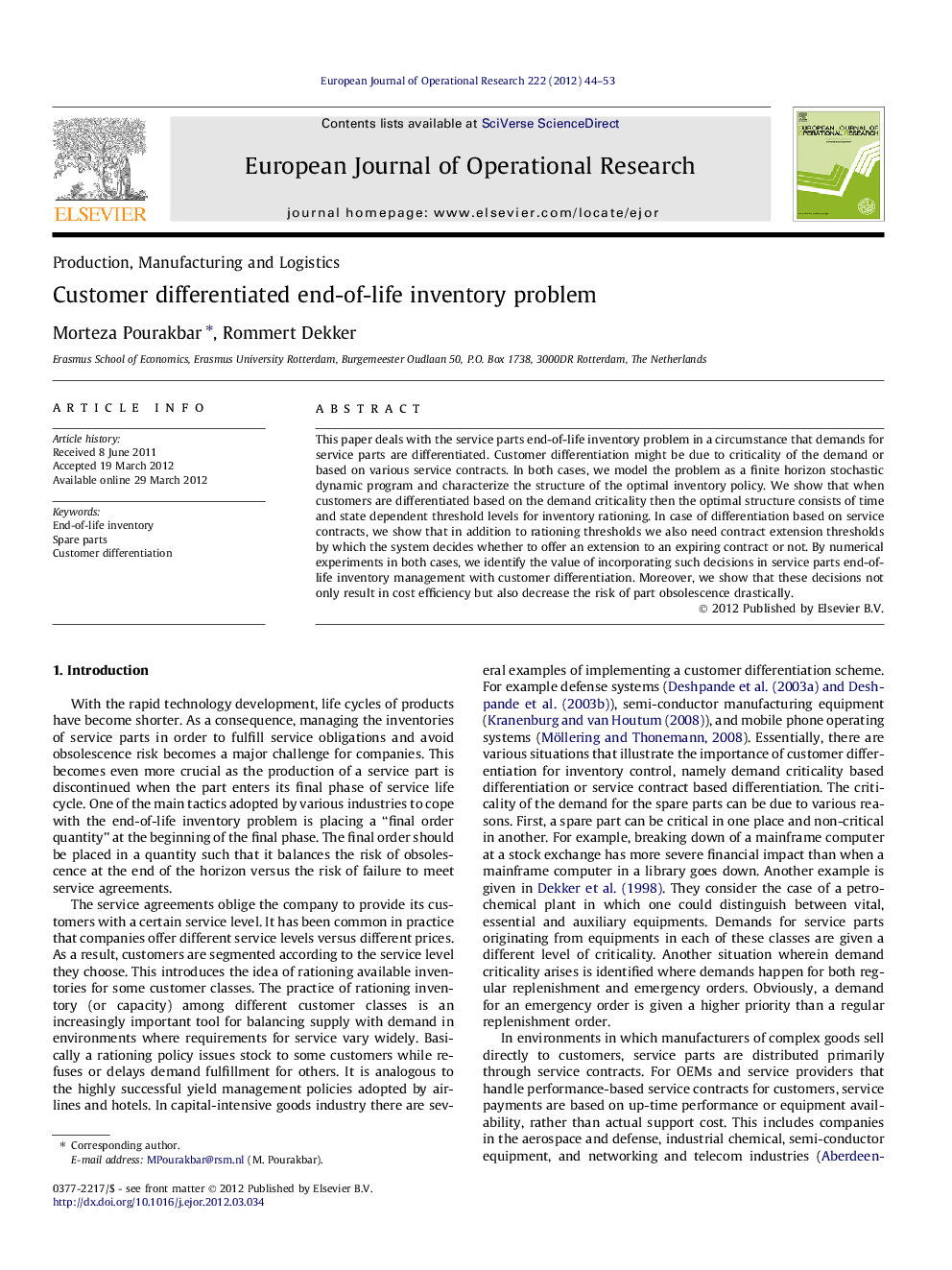| Article ID | Journal | Published Year | Pages | File Type |
|---|---|---|---|---|
| 478373 | European Journal of Operational Research | 2012 | 10 Pages |
This paper deals with the service parts end-of-life inventory problem in a circumstance that demands for service parts are differentiated. Customer differentiation might be due to criticality of the demand or based on various service contracts. In both cases, we model the problem as a finite horizon stochastic dynamic program and characterize the structure of the optimal inventory policy. We show that when customers are differentiated based on the demand criticality then the optimal structure consists of time and state dependent threshold levels for inventory rationing. In case of differentiation based on service contracts, we show that in addition to rationing thresholds we also need contract extension thresholds by which the system decides whether to offer an extension to an expiring contract or not. By numerical experiments in both cases, we identify the value of incorporating such decisions in service parts end-of-life inventory management with customer differentiation. Moreover, we show that these decisions not only result in cost efficiency but also decrease the risk of part obsolescence drastically.
► We study situations leading to customer differentiation in the final phase of service parts life cycle. ► For each situation the structure of the optimal inventory policy is characterized. ► Optimal policies consist of time dependent levels for rationing and service contract extension. ► Numerical analysis sheds light over the advantages of incorporating these decisions in the model. ► Mainly they result in cost efficiency and a remarkable reduction in the risk of parts obsolescence.
